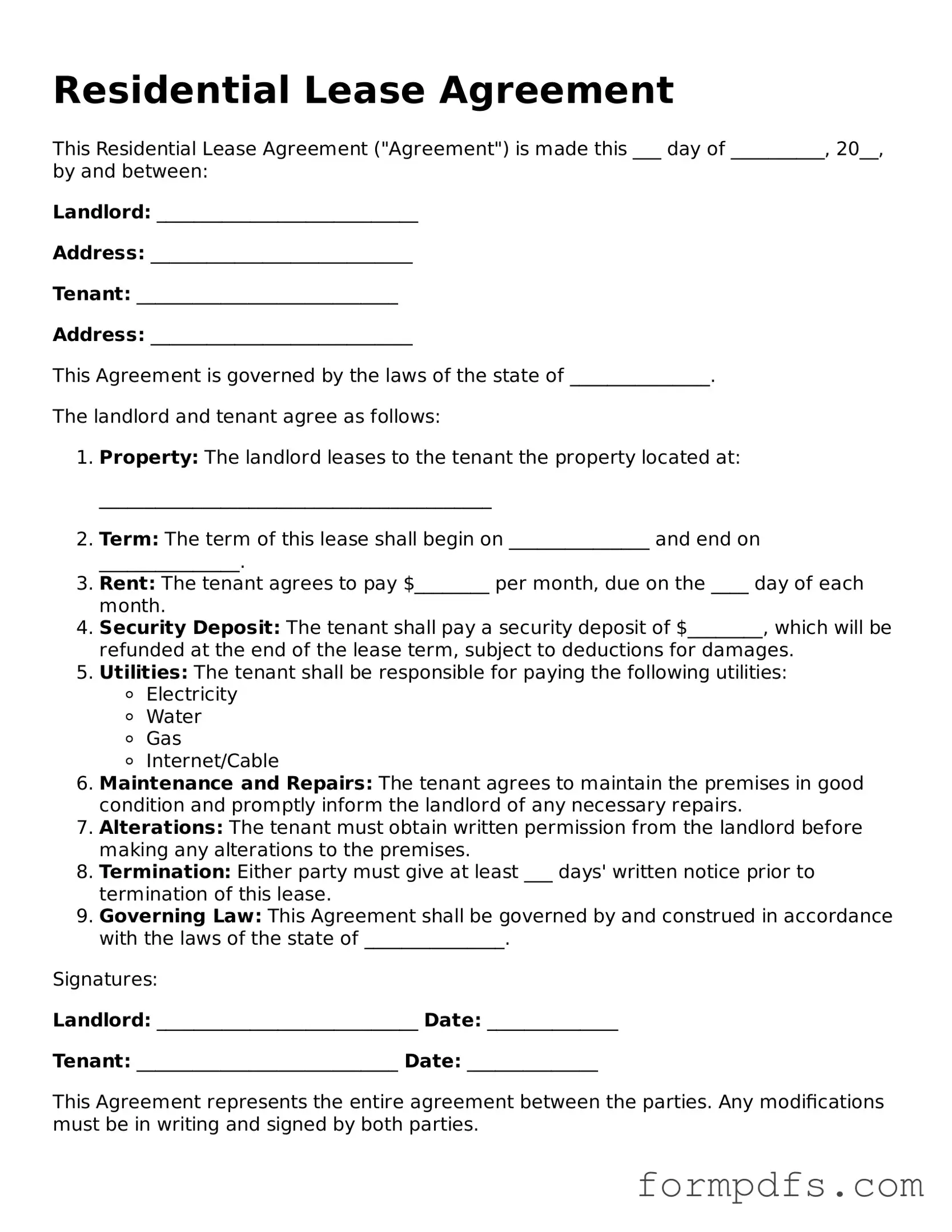What is a Residential Lease Agreement?
A Residential Lease Agreement is a legal document between a landlord and a tenant. It outlines the terms and conditions under which a tenant can rent a property. This agreement typically includes details like the rental amount, duration of the lease, security deposit, and responsibilities of both parties.
What are the key components of a Residential Lease Agreement?
Key components include the names of the landlord and tenant, property address, lease term (start and end dates), rent amount, payment due date, security deposit details, maintenance responsibilities, and rules regarding pets or smoking. It’s essential to read through all sections carefully.
How long is a typical lease agreement?
Most residential leases are for one year, but they can vary. Some leases may be month-to-month, while others can extend for several years. The duration should be clearly stated in the agreement.
Can a landlord increase the rent during the lease term?
Generally, a landlord cannot increase the rent until the lease term ends unless the lease specifically allows for it. If the lease is month-to-month, the landlord may raise the rent with proper notice, usually 30 days.
What happens if a tenant wants to break the lease early?
If a tenant needs to break the lease early, they may be responsible for paying rent until a new tenant is found or until the lease term ends. Some agreements include an early termination clause that outlines penalties or conditions for breaking the lease.
What is a security deposit, and how is it handled?
A security deposit is a sum of money collected by the landlord to cover potential damages or unpaid rent. The lease should specify the amount and conditions for its return. After the lease ends, the landlord must return the deposit within a certain timeframe, minus any legitimate deductions.
Are verbal agreements valid in a residential lease?
While verbal agreements can be made, they are not recommended. A written lease agreement provides clear terms and protects both parties. If disputes arise, having a written document is crucial for resolving issues.
What should a tenant do if the landlord fails to make necessary repairs?
If a landlord neglects necessary repairs, the tenant should first notify them in writing. If the issue is not resolved, tenants may have the right to withhold rent or make the repairs themselves and deduct the cost from the rent, depending on state laws. Always check local regulations for specific guidance.
